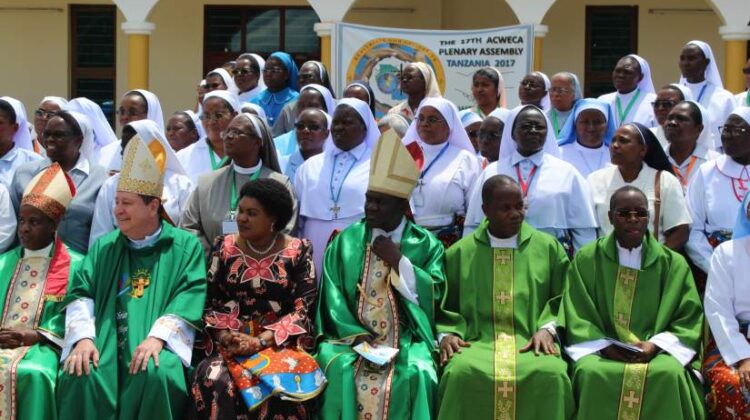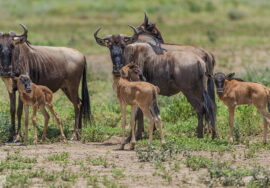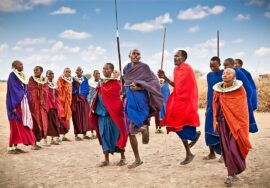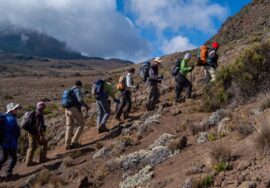
Religion in Tanzania, A Statistical and Cultural Overview
There is no doubt that faith has a big impact on Tanzania, from the busy city streets to the quiet villages. Tanzanians do it all the time. It adds a sense of tradition and community that is only found in this country to both big celebrations and quiet, everyday times. If you want to learn more about the different religions practiced in Tanzania, just keep reading.
What Religion Means to the People of Tanzania
Religion is clear in every part of life in Tanzania. The happy songs that come from churches, the lively celebrations of religious holidays, and even the simple “Mungu akubariki” (God bless you) that people say to each other every day.
Religion here is as lively as the beautiful Serengeti sunsets and as soothing as the cool breeze from the Indian Ocean. But this mixing of faith and everyday life isn’t just cute; it’s what holds Tanzanian society together. In this place, religious holidays are big events in the community, and important religious ceremonies mark important points in life.
It’s not all feasts and holidays, though. In Tanzania, religion is also a big part of how people learn to be moral and good. All major faiths teach people to respect their elders and care about their community. This makes for a peaceful and friendly society.
An added bonus is that a lot of Tanzanians look to religious leaders for advice on things other than religion, like health, family, and school. Religious groups help people in need, teach, and provide medical care, especially in rural places.
Religious Profiles of People
Tanzania has a lot of different religious views. A big chunk of its people say they are either Christians or Muslims. The following statistics of Tanzanian religions make things more clear:
63.1% were Christians
34.1% are Muslim
1.1% of Africans follow traditional faiths.
Other: 1%
Tanzania’s most important faiths
Christians
The majority of people in Tanzania follow Christianity, which has roots in the work of European preachers. It has been a big part of Tanzanian culture and society for hundreds of years, affecting many parts of daily life. Tanzania is full of churches, from grand buildings to small chapels in the middle of nowhere. Not only are these places of worship, but some of them are also important cultural and historical sites.
Christianity has an impact on many areas other than its churches. It has had a big impact on Tanzania’s education system, with many schools and colleges being set up by Christian organizations. With the building of hospitals and health centers all over the country, the church has also made important contributions to health care. Christian morals and ideals have affected politics and laws, even though the government and the state take a secular view.
But the real spirit of Christianity in Tanzania might be best shown in how active the community life is. There is a spirit of celebration and community in the lively gospel choirs, lively Sunday services, and the custom of dressing in your Sunday best. It’s not just Christians who celebrate holidays like Christmas and Easter. People of all faiths come together to pray and enjoy the time off.
Roman Catholic, Lutheran, Anglican, and Pentecostal churches all live together with other Christian groups in Tanzania, making the religion very diverse. This variety really shows how Christianity in the country is always changing and adapting to meet the needs and traditions of its people.
Islam
In Tanzania, 34% of people say they are Muslim, making it the second most popular faith. There is a small group of Shia Muslims in Tanzania, but most of the Muslims there are Sunni.
This rich Islamic tradition that goes back hundreds of years continues to grow. Especially along the coast and in the Zanzibar archipelago, which is made up of many islands, with Unguja, the largest island, being an important place for Islamic culture.
The arts, food, architecture, language, and everyday habits here have all been greatly affected by Islamic traditions. The largest city in the archipelago is also called Zanzibar City. It has many important historical and religious places, such as mosques. Mosques, both old and new, are places where people can pray and get together.
It is very clear in towns like Dar es Salaam and Zanzibar City how well Islamic practices and city life work together. The call to prayer stands out as a peaceful and holy moment in the middle of all the noise and activity. People enjoy Ramadan by doing things together and decorating with bright colors. The most important part of the holiday is Eid al-Fitr, which marks the end of Ramadan.
Islam has a subtle effect on social values, school systems, and local government in smaller towns and villages in rural areas. This shows a unique way of practicing Islam in Tanzania, which combines traditional Islamic beliefs with local customs and modern ways of doing things.
Indigenous
Indigenous views are still strong, even though they aren’t as important as the country’s main religions. They give us a look into a Tanzania that existed before it was colonized. They show that religion in Tanzania isn’t just a result of outside effects; it also comes from the country’s deep-rooted traditions and stories.
These native religions are as different as the people who live in Tanzania. For example, the Chagga people who live on Mount Kilimanjaro have views that teach them to respect nature and the mountain. Another example is the Hadzabe, who are one of the last hunter-gatherer groups in Africa. Their rituals and way of life are shaped by their spiritual link to the land.
People who hold these kinds of views often talk about ancestral spirits, the power of nature, and how important it is to have strong family and community ties. They have an effect on local traditions, social systems, and even morals. Rituals and ceremonies that are linked to these beliefs are not only religious practices, but they are also ways for people to spend time together, build community, and keep their cultural identity.
Religions Not Common in Tanzania
There are also people in Tanzania who follow Hinduism and the Bahá’í Faith, though not as many as Christians and Muslims. There are traces of these minor religions in Tanzanian society, which makes the country’s religious variety even greater.
Sikhism
People from the Indian diaspora and the descendants of traders who left India’s Gujarat region during the British colonial era make up the Hindu group. Hindus have been a big part of spreading cultural integration through marriage and the mixing of customs that happens when people from different cultures get together.
Faith of the Bahá’ís
There are Bahá’ís in every area of Tanzania, and the faith stays alive as an example of how to build peace by encouraging unity and tolerance. Its Universal House of Justice oversees community development projects that make Tanzanian society even better.
Freedom of Religion in Tanzania
Tanzania’s dedication to religious freedom is an important part of its national identity. Every person in this country has the freedom to follow their faith without fear because we value diversity. This right is protected by the Tanzanian Constitution, which says that all citizens, no matter what religion they follow, can worship, observe, practice, and teach their faith. The different religious groups are more likely to accept and understand each other because of this legal protection.
It is very important for the government to keep religion issues out of politics. It makes sure that no group is favored over another, so all of them can grow. This way of doing things has helped keep religious disputes from happening and increased tolerance. People can also change their church or belief without being punished, which shows that the country values personal freedom and rights.
Things to Do at Religious Sites in Tanzania
Tanzania has a lot of interesting religious places that are both beautiful and historic. Let’s learn more about the most important sacred sites.
Tents and mosques
Since Dar es Salaam is mostly a Mulsim city, it’s not a surprise that it has a lot of mosques, ranging from simple to fancy. In fact, one of them is from the 1200s, making it one of the oldest Islamic buildings in the whole country. Others are more interesting for the unique building that combines different styles, such as Swahili, Arab, Persian, and Indian influences.
But there are also Hindu temples in Dar es Salaam. Some of them are more than 100 years old. They stand out because of their unique colors and features, and you should go see them.
Chapels
People can see how traditional Maasai Christians pray at the Karatu Lutheran Church in the Ngorongoro Conservation Area. It was built in the early 1900s.
The Azania Front Lutheran Cathedral in Dar es Salaam is close to the city center and has tall arches and painted glass windows. It was built in 1898, and prayers are held in Swahili. Yes, you can see that for yourself.
The big Roman Catholic church in Dar es Salaam is called the Saint Joseph church. It was built in 1897. It is a landmark in the area because of its huge dome and twin towers.
Indigenous Sites
The Kondoa Rock-Art Sites are about 2,000 years old and show spiritual scenes from the time of the animists. It is important to visit this UNESCO World Heritage Site.
The Tongoni Ruins in Tanga are what’s left of a traditional Shirazi Muslim town that was built between the 15th and 16th centuries. They include a mosque, tombs, and other buildings.
Tanzania’s religion isn’t just there; it thrives and shapes the country’s character in a lot of beautiful and complicated ways. No matter how many people follow it, each religion adds to society by showing tolerance, unity, and respect for each other.
When you plan your trip to Tanzania with us, keep this in mind: you’re not just going to a place; you’re becoming a part of a world where faith, culture, and community come together to make an experience like no other.








